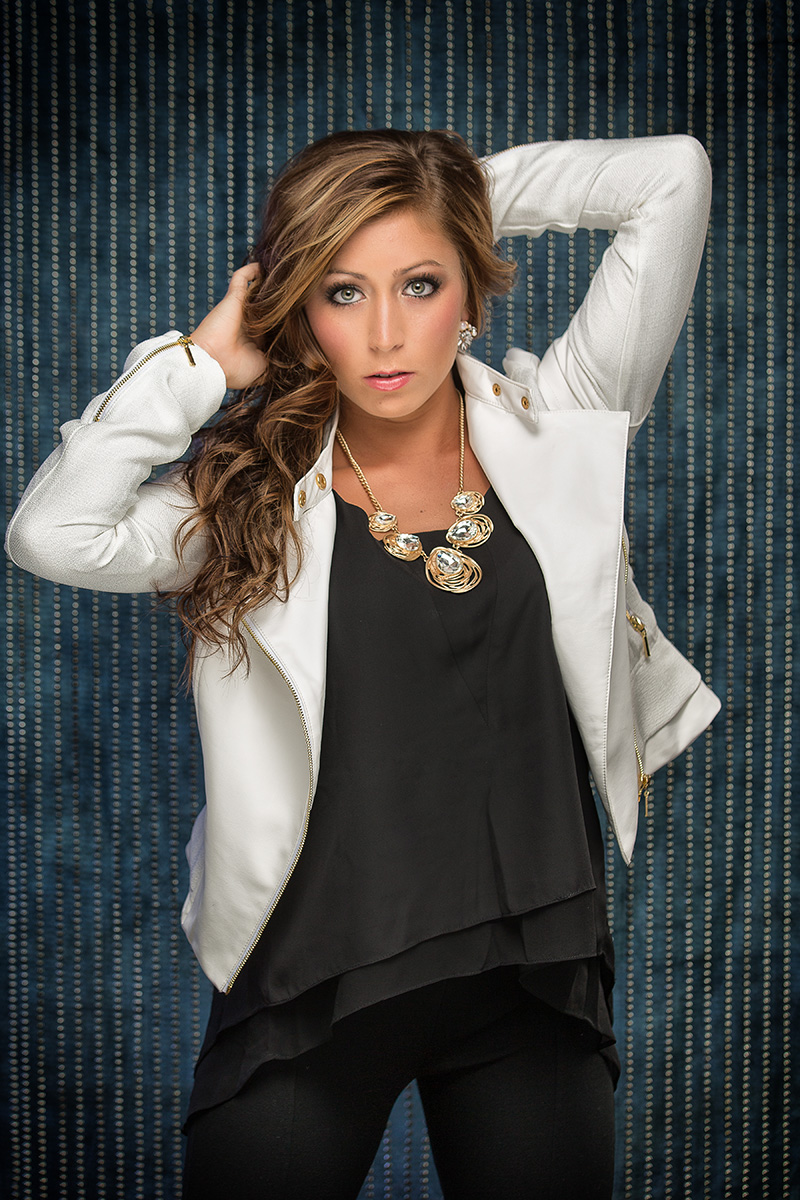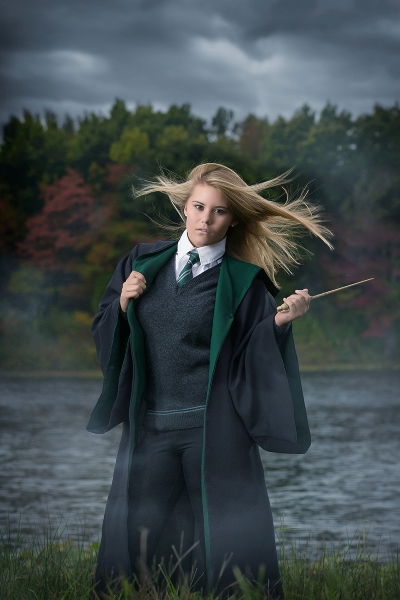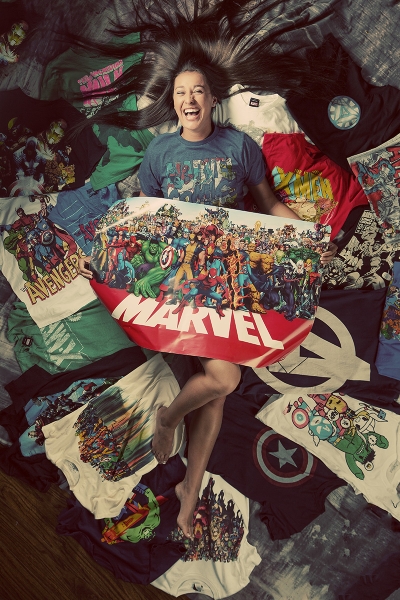Model might: Dan Rowe breaks conventions of senior photography
Small-town photographer Dan Rowe has a thriving clientele of high school seniors who want their portraits made.
• August 2016 issue

Something you won’t hear from Dan Rowe is “maybe.” He’s either with something or he’s not. This is a great quality for someone running a senior portrait business in a tiny town like Oakland City, Indiana (population 2,432).
“Our town is very small with a lot of lower-income families, but because of the way it’s laid out, there a lot of reasonably sized high schools,” says Rowe. “Last year, we ended up with 27 total high schools that we worked with. We cast a pretty big net, but it’s a net that’s well connected.”

Rowe has built a thriving senior portrait clientele over the past decade by not doing anything halfway. Seniors aren’t for the faint of heart, he says, and likens his maturity to that of a ready-for-anything 15-year-old, which might be why the niche works so well for him.
“I like to goof off, and seniors just fit with my personality,” he says. “They gravitate toward all that goofiness I’m throwing out there.”
But don’t be fooled: Rowe is tenacious about keeping senior sessions flowing through his door, and he’s serious about the quality of his work. Like many photographers when they’re just turning pro, Rowe’s early portfolio was marked by inconsistency as he bounced between brilliant moments of what he calls “pure, dumb luck” and flat-out mistakes. He was creating strong images, but he couldn’t replicate those results consistently. Determined to either get it right or die trying, Rowe went to workshops, attended online training, and combed online discussion forums. He balanced a full-time job at Verizon Wireless with photography for years before he decided it was costing him too much money in lost photo sales to keep his day job. (His wife, Adrienne, had already quit her job the year before to help run the business.)

Rowe Portrait Studios is still homebased, though Rowe and his wife have purchased the neighboring house to use for studio space. All told, their property includes about 75 acres of green space that backs up to a 23,000-acre wildlife refuge. So when it comes to location sessions, the Rowes are sitting pretty. Rowe laughs that he’s located about an hour and a half away from friend and fellow senior photographer Kevin Hudson, M.Photog. (“Change On,” April 2016), “just far enough away to keep us friends and not competitors.”
Don’t give it away
Rowe will be the first to tell you there’s nothing revolutionary about having a senior spokesmodel program. There’s no one formula that’s right for everyone, he adds, but he’s found the one that’s right for him. While large-production, styled model shoots have become all the rage, Rowe prefers not to give away all his tricks during the group spokesmodel session.
“I always question model programs that are really a smaller session of what you’ll do later,” he says. “If you’re not structuring it in your sales, it’s just a waste of time. You’re cannibalizing your sales later on because people have seen it and are over it. Essentially all I do is a much bigger brand or version of what people were calling senior safaris seven or eight years ago.”
The way it works is “crazy simple,” says Rowe. Over Thanksgiving break, he posts to all of his social media outlets that the studio is open for applications for the upcoming season of models. Rowe is a huge advocate of MyPhotoApp, which has forms built in that seniors can easily fill out with their basic information. Of the 160 applications he received last year, Rowe accepted 115, and about half of those students made it into the studio to pay the deposit.
“Kids have a tendency not to tell their parents when they do this, and sometimes the parents balk when they find out,” he says. “And that’s OK. It sounds pretty depressing that only half get accepted, but a lot of those kids who didn’t get in still want to come back for pictures, so it essentially generated a lead.”
Next comes a mandatory meeting with parents, where Rowe explains the details of the group session. He typically rents out the City Museum in St. Louis, Missouri, and charters a bus for the two-plus hour ride, dividing the kids between two shoot days. (Remember, he says, this isn’t for the faint heart.)
“This place has an airplane three stories in the air, a Ferris wheel—it’s a huge playground,” he says. He chooses consecutive Sundays so as not to compete with spring sports schedules.

Wardrobe is simple: black dresses or black pants and jackets. Rowe gives the teens a hashtag for the day and encourages them to post their own selfies to drum up buzz for the event. He doesn’t spend much time on each model. Instead he calls it an “assembly line of click, click, click, next.” These aren’t his portfolio images; they’re solely about the social media bump and for the kids to have a great time Snapchatting.
“But they’re expecting that,” he says. “I tell them this is not their senior session. This is you having fun and me getting what I need, which is a bunch of kids flooding social media with selfies. The actual senior session later on will be much different, and they know that coming in.”
Working models
After the shoot, Rowe sets up the referral program in MyPhotoApp so models can track their progress toward meeting specific goals, for which they get credit. Only a few models hit their numbers to earn credits for later, Rowe says. But this doesn’t bother him or the models. He’s honest up front about the goals, laying out exactly what they need to do so nothing is a surprise.
“We put it on the shoulders of the models, and it works for us,” he says. “Plus, there are some additional savings that we can offer them that makes everyone happy. Our pricing is structured so that models have so much incentive to buy certain items that have been discounted so much, yet they’re still high enough priced that we make the money back. Other than stress and time, it doesn’t cost anything at the end of the day.”
Rowe reiterates that his approach isn’t for everyone but notes that by conducting his model program a little differently than the norm, he’s making himself stand out.
“People either really like or hate what I say about it, but you have to do something to get people to talk about what you’re doing,” he says. “My whole act I’ve got going won’t work for every personality type, and that’s OK.”
RELATED: See more of Dan Rowe’s work with seniors in our gallery.
Stephanie Boozer is a writer in Charleston, South Carolina.

 View Gallery
View Gallery


